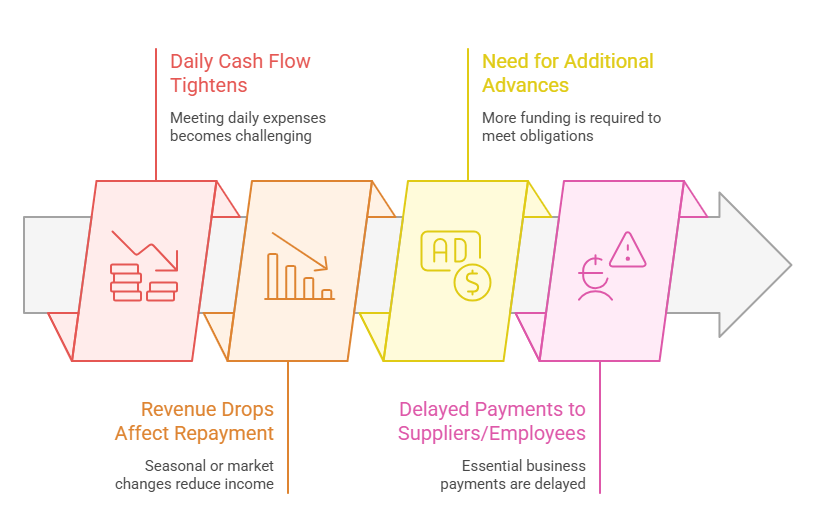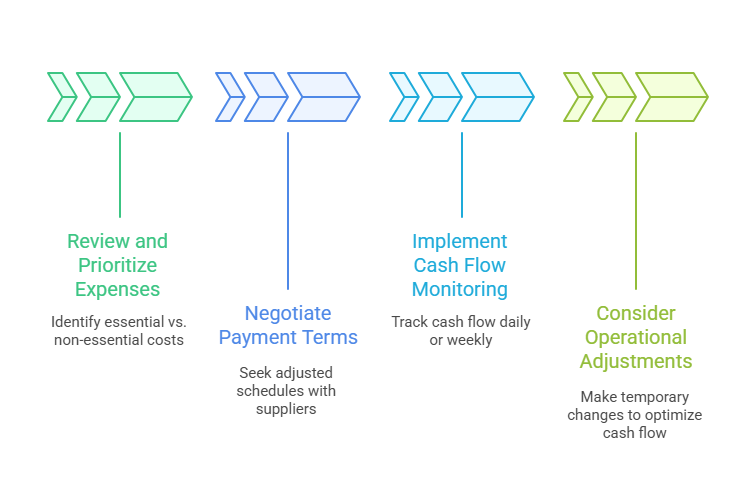Managing repayment obligations effectively can make the difference between business growth and financial strain. Many business owners fall into predictable traps that could easily be avoided with proper planning and awareness. Understanding these common repayment mistakes to avoid helps protect your cash flow and keeps your business on a path toward sustainable growth.
Whether you're considering a merchant cash advance or already managing repayment obligations, recognizing these pitfalls early can save you from costly setbacks. The key lies in developing strategic approaches that align with your actual business needs and financial capacity.
Essential Do's for Successful Repayment Management
Following proven best practices for repayment management helps ensure your business maintain healthy cash flow while meeting its obligations. These essential do's provide a foundation for smart financial planning.
- Compare multiple offers thoroughly: Different providers may offer varying terms, and comparing options helps you secure the most favorable conditions for your business situation.
- Assess your cash flow comprehensively: Understanding your revenue patterns and seasonal fluctuations allows you to choose repayment structures that align with your actual income streams.
- Borrow only what you genuinely need: Taking more than necessary increases repayment obligations unnecessarily and can strain your financial resources.
- Plan for seasonal variations: Consider how your business revenue changes throughout the year and ensure your repayment capacity remains stable during slower periods.
Critical Don'ts That Could Harm Your Business
Avoiding these common mistakes helps protect your business from financial strain and maintains your operational flexibility. These critical don'ts represent some of the most frequent errors business owners make.
- Don't rush into agreements without research: Taking time to understand terms and implications prevents you from entering unfavorable arrangements that could burden your business.
- Don't ignore your actual repayment capacity: Overestimating your ability to handle repayments often leads to cash flow problems that affect daily operations.
- Don't overlook contractual details: Missing important terms or conditions in agreements might result in unexpected obligations or penalties.
- Don't assume all providers offer similar terms: Each provider may have different requirements, fees, and repayment structures that significantly impact your total cost.
Warning Signs of Potential Repayment Problems

Recognizing early warning signs helps you address potential issues before they become serious problems. These indicators often appear gradually and require careful attention to your business metrics.
- Daily cash flow becoming increasingly tight: If meeting daily operational expenses becomes challenging due to repayment obligations, this may signal that the advance amount or terms aren't well-matched to your business capacity.
- Revenue drops affecting repayment ability: When seasonal downturns or market changes reduce your income, fixed repayment structures might create strain that impacts other business functions.
- Considering additional advances to meet obligations: Needing more funding just to handle existing repayments often indicates a mismatch between your actual cash flow and repayment requirements.
- Delayed payments to suppliers or employees: When repayment obligations interfere with essential business payments, it typically means the original advance wasn't properly aligned with your financial capacity.
Strategic Planning Steps for Better Outcomes
Implementing a systematic approach to repayment planning helps ensure better alignment between your business needs and financial obligations. These strategic steps provide structure for making informed decisions.
- Analyze your historical revenue patterns: Review at least 12 months of sales data to understand your typical cash flow cycles, seasonal variations, and average monthly income before determining appropriate advance amounts.
- Create realistic financial projections: Develop conservative estimates of future revenue that account for potential market changes or economic factors that might affect your business performance.
- Establish emergency cash reserves: Maintaining a buffer helps you manage unexpected expenses or revenue fluctuations without compromising your ability to meet repayment obligations or operate effectively.
- Document your decision-making process: Keep records of why you chose specific terms or amounts, which helps you make better decisions in the future and learn from your experience.
Managing Misaligned Expenses and Cash Flow Issues

When expenses don't align properly with repayment schedules, business owners need practical strategies to address these challenges. Managing misaligned expenses requires both immediate adjustments and longer-term planning.
- Review and prioritize all business expenses: Identify which costs are essential for operations versus those that could be temporarily reduced or eliminated to improve cash flow alignment with repayment obligations.
- Negotiate payment terms with suppliers: Many vendors may be willing to adjust payment schedules or offer extended terms, which can help you better manage cash flow timing throughout your repayment period.
- Implement more frequent cash flow monitoring: Daily or weekly tracking helps you spot potential problems earlier and make necessary adjustments before they become serious issues that affect your business operations.
- Consider operational adjustments during peak repayment periods: Temporary changes to inventory levels, staffing, or service offerings might help optimize cash flow during times when repayment obligations are highest relative to revenue.
Successfully managing repayment obligations requires careful planning, realistic assessment of your business capacity, and ongoing attention to cash flow patterns. By avoiding these common repayment mistakes to avoid, business owners can maintain healthier financial positions while still accessing the funding they need for growth.
Remember that the goal isn't just to secure funding, but to do so in a way that supports your business objectives rather than creating unnecessary strain. Taking time to understand your options, assess your true needs, and plan for various scenarios helps ensure that your financing decisions contribute to long-term business success rather than short-term complications.

.png)






